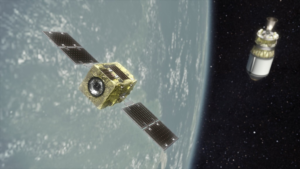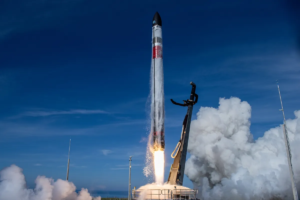
Work To Train Orbital Reef Astronauts Has Begun
In only the next few years, multiple new commercial space stations and other low Earth orbit infrastructure is expected to be built. Some examples include Axiom Space building Axiom Station, Blue Origin and Sierra Space building Orbital Reef, and a few others. With these new stations comes demand for unique services that for the most part haven’t been necessary up until now.
Orbital Reef, for example, thanks to one of its lead partners Sierra Space, is already working on Astronaut training and mission prep. In June of last year, Sierra Space announced the opening of a new human spaceflight center targeting the future commercial space economy. In the time since then, they have continued to work on this project and goal.
Flying to, operating, working in, and servicing the future Orbital Reef station will require trained astronauts that know what they’re doing. Here I will go more in-depth into the astronaut training plan, possible delays, what to expect in the coming months, and more.
Orbital Reef Training

Around this time last year, Sierra Space announced that it was creating the world’s first fully integrated commercial human spaceflight center and astronaut training academy. Currently, Sierra Space is building Dream Chaser, the world’s first commercial spaceplane. The company is also developing Orbital Reef, a commercial space station, in partnership with co-lead investor, Blue Origin.
In relation to astronaut training, a crewed variant of the Dream Chaser spaceplane is currently in development and is expected to be operational in 2026, having successfully completed its System Requirements Review (SRR) last year. The company plans for Orbital Reef to be on orbit and operational in 2027. As these dates approach, so does the need for proper training.
In a company statement, Sierra Space highlighted the three main types of customers and or astronauts that they expect will work on Orbital Reef. Here they were quoted saying, the first type is “Professional career astronauts, who will spend months in space operating and maintaining the first commercial space station, Orbital Reef. The Academy will train them with skillsets similar to those of NASA’s career astronauts. Sierra Space team members will be among those entering into this training.” You then have “Specialist astronauts who are professional customers in other fields and will be trained in how to conduct scientific research, manufacturing, and other commercial activities on Orbital Reef.” Finally, you have “Experiential astronauts, who want to visit Orbital Reef to experience what it is like to live and work in space. This category will require less intensive technical training with a primary focus on ensuring safe operations. These participants, like all astronauts, will require in-depth physical exams and extensive safety training” they said.
Similar to NASA’s astronaut selection process, Sierra Space’s Human Spaceflight Center and Astronaut Training Academy aims to commence the professional astronaut selection process late this year, with training for the first cadre of selected astronauts to begin in 2024. The company expects to be able to start flying astronauts by 2026 to begin construction of Orbital Reef.
The program will be led by Sierra Space’s President, Dr. Janet Kavandi, a veteran NASA Astronaut and inductee into the United States Astronaut Hall of Fame. When asked why Sierra Space is working on this program she responded, “Our first Dream Chaser spaceplane, Tenacity, is set to launch early next year on a series of cargo missions to the International Space Station. By 2026, we will be flying astronauts and other crew to Orbital Reef, the world’s first commercial space station that we are building with our partner, Blue Origin. To be ready for that, we need to assemble a group of the best and brightest to serve as astronauts and position Sierra Space at the forefront of a new commercial generation of spaceflight. We will make an announcement closer to when we are ready to engage in astronaut selection. Every Monday, we have orientation for new hires, and I make it clear whenever I speak to new team members that we will be taking at least some people from within the company to help us staff on-orbit destinations” she said.
In November 2021, Sierra Space secured $1.4 billion in capital, the largest Series A capital raise in 2021 and the industry’s second-largest private capital raise in history. This funding is going directly toward the development of big projects such as Orbital Reef and the training center as well.
Current Progress

Blue Origin and Sierra Space, along with their long list of partners, see Orbital Reef as a mixed-use business park of the future. Available for a host of different individuals and companies for manufacturing, science, entertainment, etc. As far as the building process and construction go, there is a lot of work to be done. Blue Origin is responsible for providing utility systems, the large-diameter core modules, and the New Glenn launch system. Sierra Space is working on the Large Integrated Flexible Environment (LIFE) habitat, node module, and both the crewed and uncrewed Dream Chaser spaceplane.
While things could change in the future, for the most part very few of these projects are replaceable. This adds a lot of extra pressure and time constraints on these various developments. The core modules for example have a large enough diameter to warrant the use of New Glenn’s fairing size. Other rockets within the industry won’t be able to launch these segments. The LIFE Habitat is unique and expected to provide a good majority of the available space on this station. If not completed in time, it will hold back this project’s potential. Even the crewed Dream Chaser spaceplane and Boeing Starliner are needed for future human flights to and from the station.
On the bright side, progress is being made and most projects are still on track. Both Blue Origin and NASA expect New Glenn to lift off for the first time next year. This is supported by the fact that the company was recently awarded a Mars mission late next year. When visiting the company’s factory NASA officials pointed out that a lot of progress had been made. However, from our point of view with very little information and updates, it’s hard to say when this rocket will be ready to launch. Even with the mission scheduled for late next year, it seems very ambitious.
Dream Chaser has run into a few delays which not only affects the uncrewed variant but also the crewed. The launch moved to late this year will likely get pushed back further as both the spaceplane and its launch vehicle Vulcan have more work to do. We won’t see a crew anywhere near Dream Chaser until the uncrewed variant has flown successfully multiple times.
The LIFE Habitat has been consistently tested with promising results supporting an on-time delivery and completion. The state of these various projects by the end of next year will determine whether this station begins construction on time or is delayed a few years. Either way, Sierra Space knows it will need to train astronauts and has begun work to prepare for a timely station completion.
In regard to this, Sierra Space’s first step, which is already well underway, is to stand up a medical advisory board. This board will start the evaluation of the Dream Chaser vehicle for human factors. They will also have their own chief medical officer with a primary aerospace physician to lead that function. They will then have a staff consisting of aerospace doctors, physicians and psychologists, so that they can do the same types of evaluations. The company expects applications from former NASA astronauts, former astronaut candidates, and others who trained for the process. They expect it to be very similar to a NASA astronaut selection process with probably tens of thousands of applicants at the outset that they will then diligently work through to select the optimal candidates for the mission.
Another category of astronaut could be people who lease space on Orbital Reef. Specialist astronauts are professionals in another field. They could be medical researchers who are doing cancer research in microgravity. A pharmaceutical company may want to send its own researchers up there to work because of their specific expertise or perhaps the research contains intellectual property that they wish to safeguard. Sierra Space could train them how to work and live on a space station safely – how to use the lab, how to take care of hygiene and food preparation, how to use exercise equipment, all while being safe – in about three to six months. The last category would be an experiential astronaut, someone who wants to experience what it’s like to live and work in space. NASA calls this category “spaceflight participants.” These people don’t necessarily have a defined technical role when they go to the station, although they would still need to perform duties in support of the crew. This would require more modest training. However, they would be offered additional training if they decided to take on certain tasks such as an EVA. Something we can expect to hear more about in the next few months.
Conclusion
Sierra Space is about to begin its initial selection process and begin training astronauts next year. This is for Dream Chaser and primarily Orbital Reef which will be constructed in the coming years. As the industry shifts toward more commercial applications, the need for unique services such as these is in high demand. We will have to wait and see how it progresses and the impact it has on the space industry.



